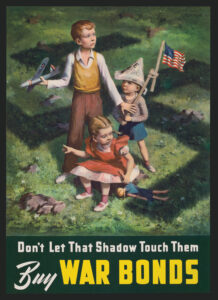Reviewed by Eric J. Mink
By Peter S. Carmichael
University of North Carolina Press, Chapel Hill, 2005
Many of the Virginia men who came of age during the 1850s served conspicuously as secondary officers in the Army of Northern Virginia. As the backbone of General Robert E. Lee’s army, those young combatants — men like W.H.F. “Rooney” Lee, William Pegram, Alexander “Sandie” Pendleton and Walter Taylor — held positions both as field and staff officers, in which many earned a reputation as some of the most devoted sons of the Confederacy. Both feared and respected by their opponents, they fought with strong resolve and grim determination. Union General William T. Sherman once classified them as “the most dangerous set of men which this war has turned loose upon the world….They hate Yankees ‘Per se’ and don’t bother their brains about the Past, present or Future.”
Historians have traditionally shared Sherman’s views and have painted young Southerners as hotheads whose strong commitment to the war was fueled by a need for fighting, killing and destruction. That stereotype suggests that the young soldier of the South had a narrow view of the war and impulsively lunged at the idea of secession. In his new book The Last Generation: Young Virginians in Peace, War, and Reunion (University of North Carolina Press, Chapel Hill, 2005, $39.95), Peter S. Carmichael, an associate professor of history at the University of North Carolina at Greensboro, tackles that stereotype.
His detailed investigation offers a different portrayal of such men, revealing a complex group that wrestled with worldly issues and came to disunion only after much debate and internal struggle. He unveils a generation of men very much in tune with the political and economic issues of the time, while also concerned about their place in Virginia’s future.
For his analysis, Carmichael selected a sample group of 121 men who reached adulthood during the turbulent decade prior to the war. Typically, they were sons of slaveholders, attended Virginia universities and resided in the commonwealth on the eve of war. Carmichael combed through their previously untapped writings, such as master’s theses and articles that appeared in literary magazines as well as transcripts from their debating societies. The result is a tight, readable and engaging generational study in which the reader is introduced to their ideas, hopes and beliefs, with a focus on why they chose to go to war, what they hoped the conflict would resolve and how they dealt with defeat. At the center of the study is their overwhelming desire for a stronger community, in this case Virginia, and acceptance and status at home.
A prevailing theory in his study is Carmichael’s assertion that the younger generation was a proponent for progress and change. Like most young people, they frequently clashed with their parents and faulted older generations for perceived societal, cultural and economic problems at home. Carmichael found that while they upheld the values of a slaveholding society, young Virginians also accused the previous generations of allowing Virginia’s stature to decline economically and politically within the Union.
The result was an internal conflict: On one hand they sought acceptance in the slaveholding class, which pushed them inward toward a more traditional Southern culture that valued the ownership of land, slaves and a community obligation. Conversely, they wished for revitalizing progress that would create a more diversified state economy with an attendant rise in middle-class lifestyles. Young Virginians, Carmichael asserts, were not radical Southerners or rabid secessionists, but as the country drifted closer to war, young men saw the new Confederate nation as a possible economic and social advantage, both for their state and for themselves. “The prospect of earning adult status by freeing Virginia from the grasp of ‘Black Republicanism’ and thus returning the state to a position of uncontested leadership in a new Southern nation,” Carmichael argues, “drew them to secession and war.”
The war presented a testing ground for the younger generation. In part, the young Virginians embraced the Confederate effort as a way in which to prove their manly courage and self-discipline. As a result, they became some of the most ardent supporters of the Confederacy and acquitted themselves conspicuously on the battlefield. “By constructing the war as a path for achieving individual ‘manhood,’” Carmichael believes, “young Virginians became eager to sacrifice themselves physically.”
A strong thread in Carmichael’s argument is the young men’s religious conviction. Young Virginians could not conceive how God would favor a nation that preyed upon the civilian population, which is how they viewed the invading Union forces. As the war dragged on, Carmichael asserts, the young officers in Lee’s army began to see the Southern cause as a holy war. In the end, death on the battlefield was equated to Christian martyrdom, which in turn served to elevate them to a place of honor within their families and communities.
Carmichael does not end his study at Appomattox, but instead looks at how the war’s survivors dealt with Reconstruction. He found that they had little difficulty reconfiguring their identities as Americans. In the war’s immediate aftermath, they advocated moderation and chose not to revive the struggle against their enemies. They returned to their hopes for economic diversification, internal improvements and industrial growth. Ironically, Carmichael found that when the long-desired progress and economic wealth did arrive, the reality of the dream did not fulfill its promise.
The drastic changes to the economy, the destruction of the environment and the corruption of values that came with industrialization horrified these men. In the end, the members of the last generation to come of age in a slaveholding society repeated the same mistakes they charged to previous generations: In the face of a changing society, they retreated to a romanticized view of the Old South and lapsed into sentimentalism.
Particularly admirable aspects of this book are the author’s extensive research into previously untapped sources and his articulate explanation and treatment of the subject. The narrative is complemented by a useful appendix containing a dozen statistical tables where the author’s study group is sorted by age, prewar occupation and religious and political affiliation, among other categories. In total, The Last Generation is a unique and thought-provoking book. No doubt it will find an enthusiastic audience among historians and casual readers alike. For anyone looking for a clearer understanding of why young Virginians went to war and how they ultimately dealt with defeat, Carmichael’s study is a must have.




